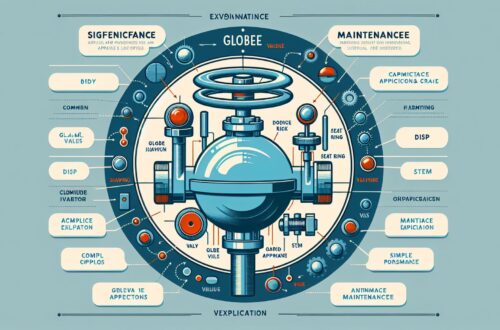
Solenoid Valves: The Unsung Heroes of Flow Control
Solenoid valves may not be the first thing that comes to mind when you think about essential equipment for industrial applications, but they are, in fact, some of the unsung heroes of the world of flow control. Many people go about their day, blissfully unaware of how much they owe to the impeccable function of these valves. Whether it’s regulating flow in your coffee machine or controlling operations in mega manufacturing plants, solenoid valves play an integral role.
So, what makes this humble device so vital? In this blog post, we will take an in-depth look at solenoid valves, their workings, their use cases, and why they warrant a higher degree of public recognition.
What is a Solenoid Valve?
A solenoid valve is essentially an electromechanical device that controls the flow of liquids or gases. It operates through a solenoid, a type of electromagnet consisting of a coil of wire that generates a controlled magnetic field. When this magnetic field is activated, it either opens or closes the valve, thereby controlling the flow of the medium.
The unique thing about solenoid valves is that they provide a safe and efficient method of controlling flow. They’re versatile enough to be used in a wide variety of applications, from vending machines to heating systems and from fuel injectors to natural gas pipelines[^1^].
How Does a Solenoid Valve Work?
The workings of a solenoid valve are fascinating. When electrical energy is supplied to the solenoid, it creates a magnetic field which pulls a plunger or a piston, opening the valve. Once the electricity is stopped, the magnetic field collapses, and a spring forces the plunger back to its original position, closing the valve.
Depending on how they are designed, solenoid valves can be normally open or normally closed. A normally open valve will close when the solenoid is activated and vice versa for a normally closed valve.
Common Types of Solenoid Valves
Solenoid valves come in a variety of types, each with different designs and functionalities, including direct-acting, pilot-operated, 3-way, and 4-way valves—each suited to meet different industrial requirements[^2^].
-
Direct-acting Valves: These types of valves are relatively simple, and they operate by a direct action of the coil on the valve mechanism. They’re reliable and can operate in a wide range of conditions, making them ideal for many applications.
-
Pilot-operated Valves: These make use of pressure differential for their operation. They require less electrical energy and are better suited for controlling large flow rates.
-
3-way Valves: These valves provide three ports or connection points. They can be used to alternately apply pressure to and exhaust pressure from a valve actuator or a single acting cylinder.
-
4-way Valves: These valves have four or five pipe connections, commonly called ports. Often used to operate double-acting cylinders or actuators, 4-way valves are available with various types of actuation.
Applications of Solenoid Valves
The applications of solenoid valves are as varied as their types. Here’s a quick rundown of a few areas where they shine:
-
HVAC Systems: In heating ventilation and air conditioning systems, solenoid valves are used to control the flow of hot and cold water or steam.
-
Home Appliances: They play a big role in dishwashers, washing machines, and gas ovens, where they regulate water, detergent, and gas flow.
-
Industrial Applications: Solenoid valves are priceless in controlling critical operations in the manufacturing industry.
-
Medicine and Dentistry: In these fields, solenoid valves control the flow of gases and fluids for a wide variety of devices[^3^].
In conclusion, solenoid valves, though often overlooked, play a substantial role in our daily lives. Their diverse applications, efficient operation, and reliable nature make them indispensable. So, next time when your coffee is being brewed or when your car is being filled with gas, stop for a moment and appreciate the solenoid valves for their service.
References
[^1^]: “What is a Solenoid Valve?”. Emerson. Retrieved from: https://www.emerson.com/en-us/automation/valves-actuators-regulators/solenoid-valves
[^2^]: “Solenoid Valve Type and Function”. Tameson. Retrieved from: https://tameson.com/solenoid-valve-type-function.html
[^3^]: “How Solenoid Valves Work – Basics actuator control valve working principle”. YouTube video, 2:35, posted by “Engineer775”, June 6, 2018. https://www.youtube.com/watch?v=y3KSXgPskfg




